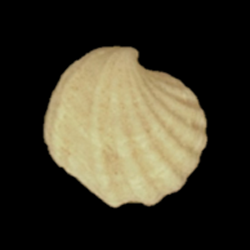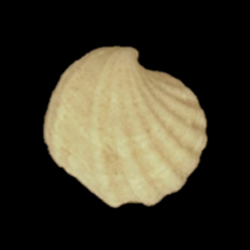
Verticordiidae

- Phylum: Mollusca
- Class: Bivalvia
- Order: Anomalodesmata
- Family: Verticordiidae
Overview
Common name: Verticordia clams
Key morphological features: The Verticordiidae are small to medium sized, up to 100 mm. The shells are equivalve or inequivalve, with the right valve larger and overlapping the left (in some species, the left valve overlaps the right). They are thin-walled or solid, and oval or trapezoidal in shape. The posterior end may or may not gape. The shell is composed of aragonite and exterior sculpture is smooth to granulate, with radial ribs and tiny spines. Some have broad undulations and sand grains often adhere to the shell surface. Valve interiors are nacreous. The pallial line is unbroken and has a shallow sinus, and the interior shell margins are smooth, although in some species they are ridged by the external ribs. Species of Verticordiidae are isomyarian (both adductor muscles equal in size) or heteromyarian (one adductor muscle smaller than the other). The edentate or heterodont hinge is weak, and the right valve contains one or two peglike cardinal teeth. Source: Mikkelsen, P.M., and Bieler, R. 2008. Seashells of Southern Florida: Bivalves. Princeton, New Jersey: Princeton University Press. 503 pp.
Geological range: Cretaceous to Recent (Mikkelsen & Bieler, 2008).
Geographic distribution: A distributional map for modern Verticordiidae may be accessed from OBIS. A distributional map for ancient Verticordiidae may be accessed from the Paleobiology Database.
Diversity: There are 58 recognized living species of Verticordiidae and 9 genera (WoRMS database, unvetted). The Paleobiology Database recognizes 15 fossil genera and 13 fossil species of Verticordiidae (unvetted).
Paleoecology: The Verticordiidae are deepwater marine carnivores that prey on benthic organisms. They live infaunally, buried in muddy sediments. Verticordiids possess a ring of tentacles which are thought to be involved in the process of prey capture, along with the foot. They are found worldwide in deep to abyssal waters, and are generally rare. Source: Mikkelsen and Bieler (2008).
Phylogenetic status: Unknown.
